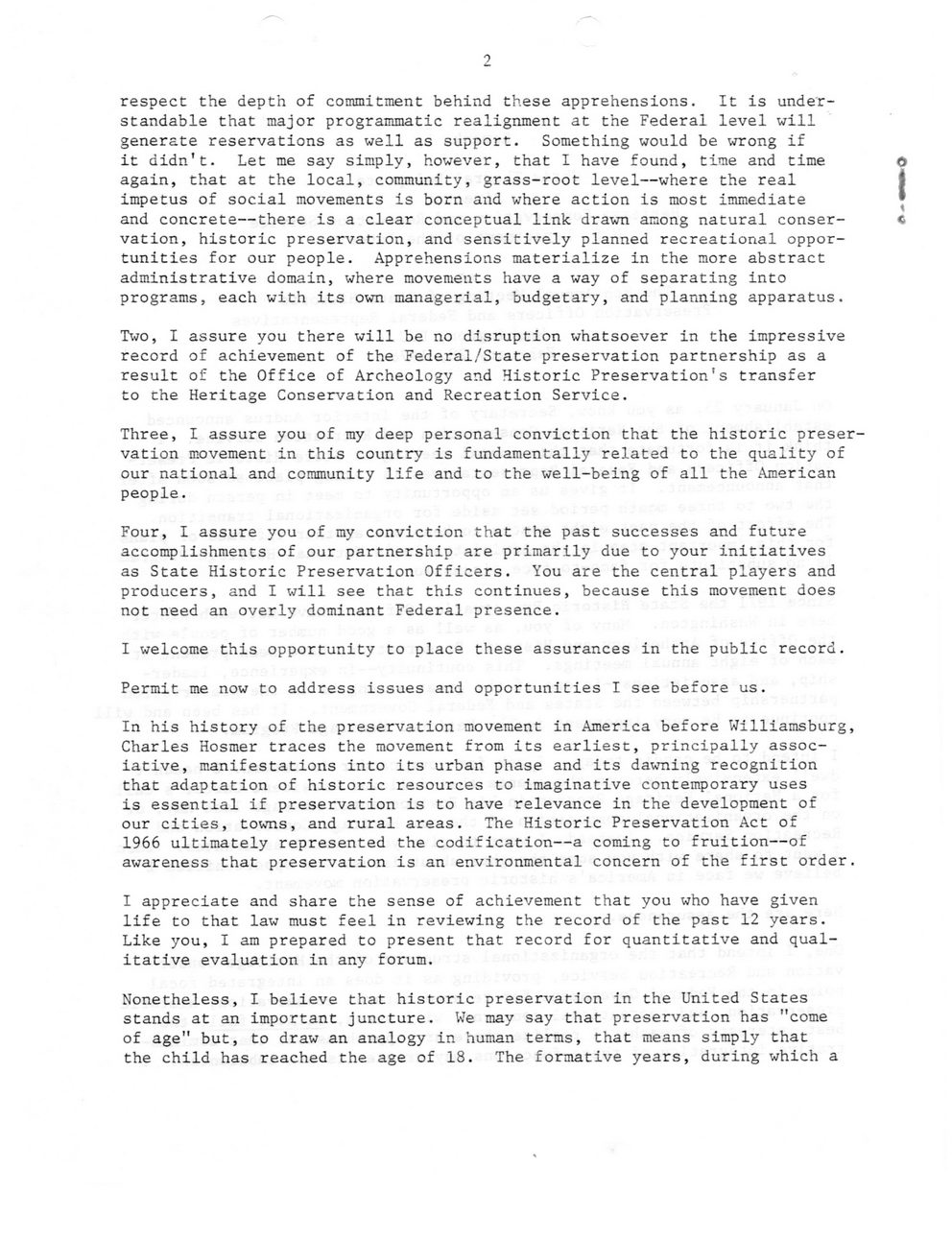This text was obtained via automated optical character recognition.
It has not been edited and may therefore contain several errors.
2 respect the depth of commitment behind these apprehensions. It is understandable that major programmatic realignment at the Federal level will generate reservations as well as support. Something would be wrong if it didn't. Let me say simply, however, that I have found, time and time o again, that at the local, community, grass-root level?where the real I impetus of social movements is born and where action is most immediate * and concrete?there is a clear conceptual link drawn among natural conser- ? vation, historic preservation, and sensitively planned recreational opportunities for our people. Apprehensions materialize in the more abstract administrative domain, where movements have a way of separating into programs, each with its own managerial, budgetary, and planning apparatus. Two, I assure you there will be no disruption whatsoever in the impressive record of achievement of the Federal/State preservation partnership as a result of the Office of Archeology and Historic Preservation's transfer to the Heritage Conservation and Recreation Service. Three, I assure you of my deep personal conviction that the historic preservation movement in this country is fundamentally related to the quality of our national and community life and to the well-being of all the American people. Four, I assure you of my conviction that the past successes and future accomplishments of our partnership are primarily due to your initiatives as State Historic Preservation Officers. You are the central players and producers, and I will see that this continues, because this movement does not need an overly dominant Federal presence. I welcome this opportunity to place these assurances in the public record. Permit me now to address issues and opportunities I see before us. In his history of the preservation movement in America before Williamsburg, Charles Hosmer traces the movement from its earliest, principally associative, manifestations into its urban phase and its dawning recognition that adaptation of historic resources to imaginative contemporary uses is essential if preservation is to have relevance in the development of our cities, towns, and rural areas. The Historic Preservation Act of 1966 ultimately represented the codification?a coming to fruition?of awareness that preservation is an environmental concern of the first order. I appreciate and share the sense of achievement that you who have given life to that law must feel in reviewing the record of the past 12 years. Like you, I am prepared to present that record for quantitative and qualitative evaluation in any forum. Nonetheless, I believe that historic preservation in the United States stands at an important juncture. We may say that preservation has "come of age" but, to draw an analogy in human terms, that means simply that the child has reached the age of 18. The formative years, during which a

Bartram Dept.-of-Interior-Address-3